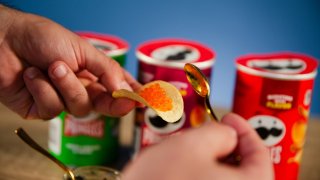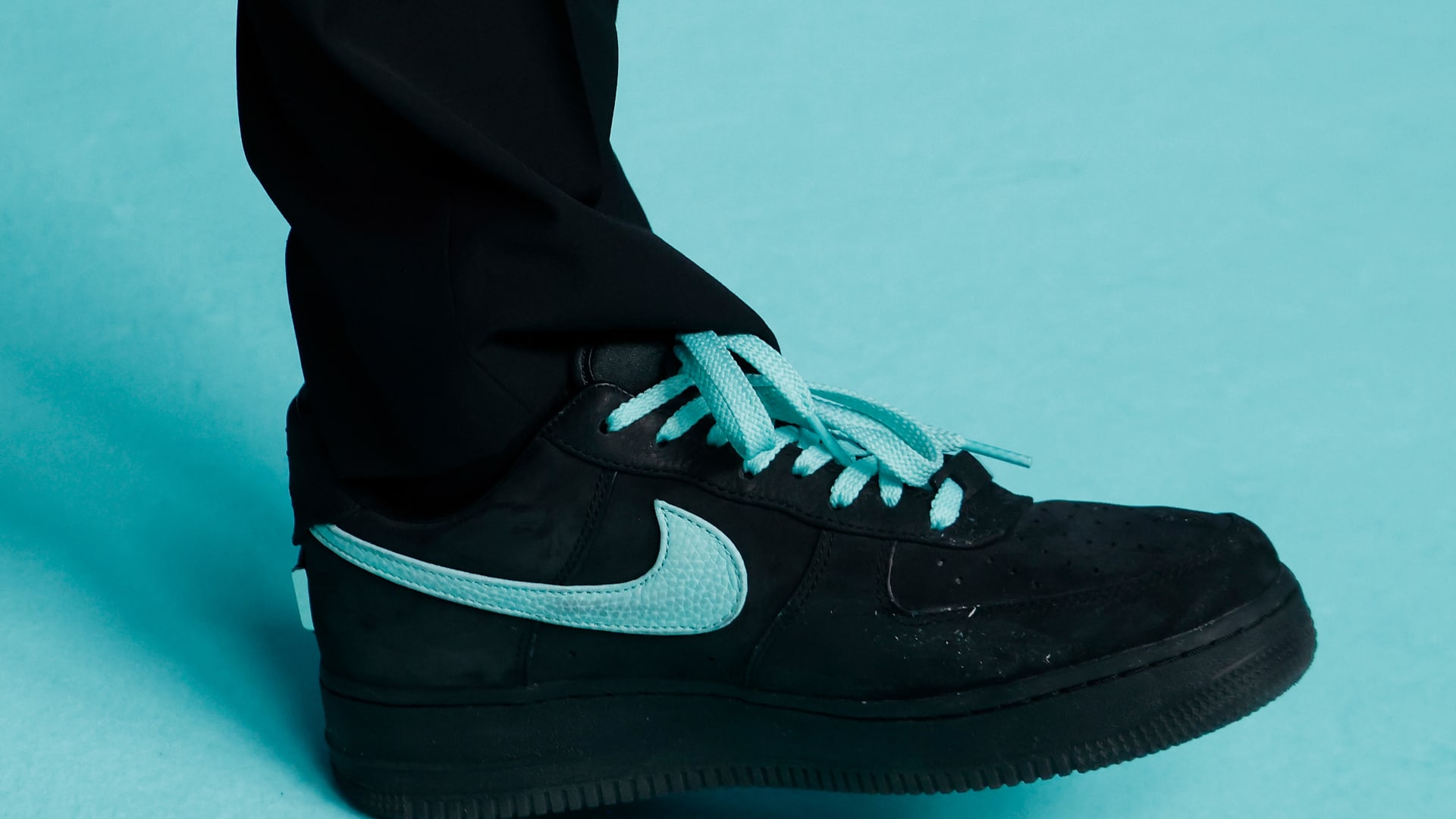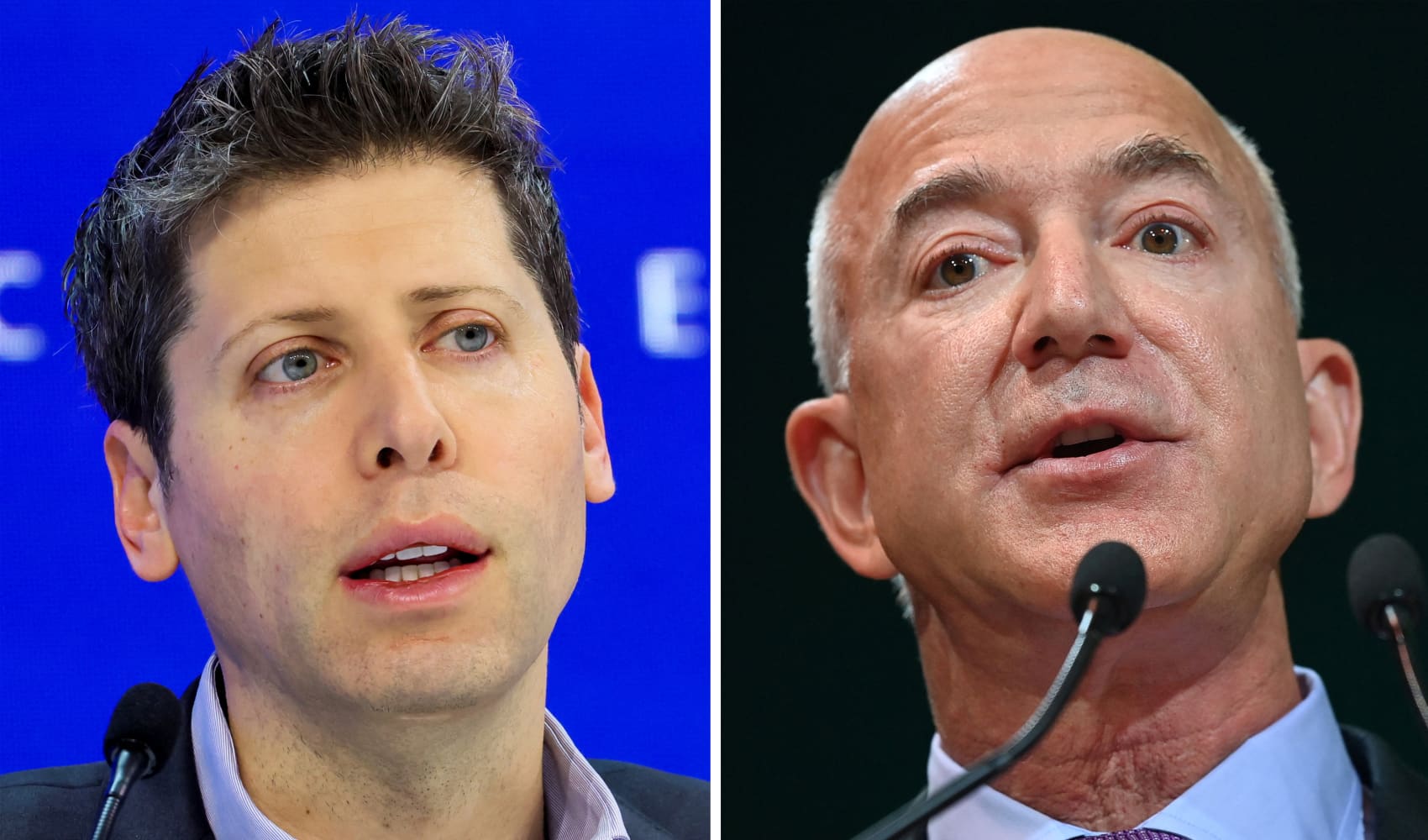
- Mattel's more than 100 partnerships for the "Barbie" movie — which include Bumble, Burger King, Revlon, and Cold Stone Creamery — highlight a year of peak brand attention seeking.
- Offbeat collaborations are in, from a Nike Swoosh by way of Tiffany's to French's mustard-flavored Skittles and The Caviar Co. teaming up with Pringles.
- But product mashups can be tricky to pull off, and when they go awry, can stoke consumer ire and cause reputational damage.
French's mustard-flavored Skittles.
Nike sneakers with a Tiffany & Co. blue swoosh.
A "crisps and caviar" snack kit from Pringles and The Caviar Co.
Get top local stories in Southern California delivered to you every morning. Sign up for NBC LA's News Headlines newsletter.
While brand partnerships are a tried-and-true tactic to get attention, the marketing mashups of 2023 take it to a whole new level. Fueled by Mattel's more than 100 partnerships for the "Barbie" movie — which include Bumble, Burger King, Revlon, and Cold Stone Creamery — strategic alliances are more common and offbeat than ever.
Waning consumer attention spans and the escalating number of marketing messages have forced companies to find novel ways to break through. In turn, many have turned to "unexpected and innovative" partnerships to stand out, said Daniel Andersson, chief creative officer at global branding agency FutureBrand.
"In today's world, the window for getting noticed is extremely narrow," he said.
Money Report
Alliances can take a variety of forms, such as co-creating a new product or cross promoting each other's goods. Yet, most have the same objective: boost brand awareness. By teaming up with another company, they can expand their consumer base and potentially increase revenue while often sharing marketing costs with their partner.
Successful efforts "create social conversations and new impressions, which can then feed into increased market share and the sale of core products," said Allison Ames, president and CEO of the global brand extension agency Beanstalk.
Beanstalk put together the partnership between Kellogg's Pringles brand and The Caviar Co. after noticing a trend on TikTok where users added a dollop of caviar on the chip. The odd food combo also gained traction after it made an appearance on "Real Housewives of New York."
The three caviar kits, priced at $49, $110, and $140 — which include separate containers of Pringles and caviar — went viral on social media, with users posting videos of the kits and doing taste tests. Both brands got additional attention as news, entertainment, and food programs covered the launch.
That partnership may make less inherent sense than a deal between two brands that have a common audience. For instance, PepsiCo's Doritos and Taco Bell teamed up years back to create Doritos Locos Tacos, which have a Doritos nacho cheese shell, and are still sold now. Both brands appeal to younger consumers who eat grab-and-go foods. In addition, there's the 2023 alliance between Kellogg's Pop-Tarts and Crocs, which both reach a mass, mainstream audience. That initiative included Pop-Tarts-shaped charms for Crocs footwear and edible Croc-shaped candy charms.
If handled with care, a high-end and lower-end brand collaboration like the Pringles and The Caviar Co. can expand both of their audiences, Ames said. She points to the recent alliance between Clorox-owned Hidden Valley Ranch dressing and truffle brand TRUFF. TRUFF's Original Black Truffle Hot Sauce was infused into Hidden Valley Ranch to create a new condiment concoction that sold for $24.99.
"Hidden Valley gained credibility with a premium positioning and a higher-end flavor profile from TRUFF," she said. "TRUFF gained exposure to a larger audience from Hidden Valley's customers. So, it opened new doors for both of them."
Like many other brand collaborations, that product was offered on a limited-time basis to create a sense of urgency and generate extra buzz.

As more companies consider collaborations, it's vital that both parties do due diligence before joining forces, say marketing experts.
"Brands need to be very, very careful with whom they start a collaboration with," said Andersson. "Two logos can't just be slapped together, and one brand can't overpower the other. There needs to be a thoughtful idea behind it. Both brands need to bring something to the table that will elevate each other."
When brand partnership ideas go bad
It's also essential that brands fully understand each other's missions, values, and reputations.
"They need to do some background checks," Andersson said.
Creating a winning combo is more nuanced than it seems, according to Allen Adamson, co-founder of the brand and marketing collective Metaforce and co-author of "Shift Ahead: How the Best Companies Stay Relevant in a Fast-Changing World." If a partnership is too obvious, like chips and a soft drink coming together, it won't garner attention. But a pairing also can't confuse consumers.
"Joining forces is easier said than done," Adamson said. "Most miss the mark."
And as societal values change and certain issues gain more prominence, long-standing partnerships can also face new scrutiny.
For instance, Lego was pressured by Greenpeace and others to end its long-standing partnership with Shell. Previously, Lego toy sets were distributed at Shell gas stations in dozens of countries.
"When partnerships offend consumers, they can backfire and fail," Ames said. "Brands need to contemplate this possibility before going live."
She points to a partnership between retailer Forever 21 and weight-control company Atkins Nutritionals, in which consumers received a free Atkins diet bar with every online order. Shocked shoppers, including those who ordered plus-size clothing, took to social media to share how the effort offended them.
"The collaboration drew backlash from consumers who accused the retailer of promoting diet culture and body-shaming," Ames said. "Forever 21 quickly issued an apology."






